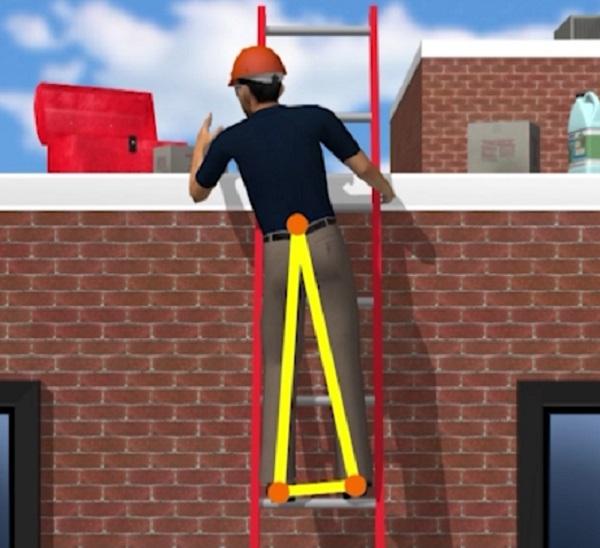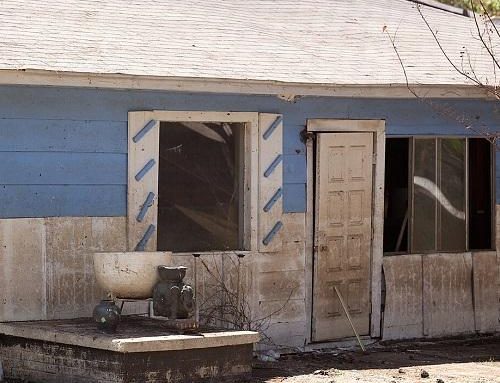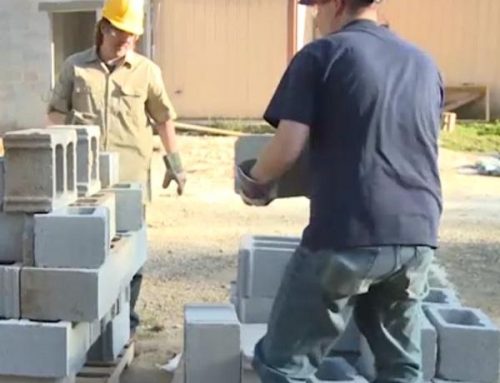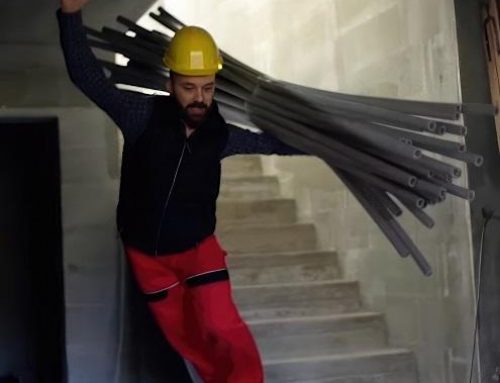Injuries from slips, trips and falls are a major concern for construction workers. According to an online training course on construction safety, slips, trips and falls account for 17% of disabling occupational injuries and 15% of on-the-job fatalities in the construction industry. While we may laugh when we see slapstick comedies showing people slipping on banana peels, the reality is that falls can lead to serious injuries like broken bones, back strains, concussions, and even death.
Fortunately, with proper awareness and preventive measures, many slips, trips and falls can be avoided at construction sites. This article will provide an overview of techniques construction workers can use to maintain stability and balance, identify and eliminate hazards, wear appropriate footwear, and practice safe falling. All the information is derived from an in-depth online training program on preventing slips, trips and falls in construction environments.
Understanding Your Center of Gravity
To avoid slips, trips and falls, it’s important to first understand how our bodies are able to stand and walk upright. A key factor is our center of gravity. This refers to the point where the weight of our body is equally distributed on both sides. The center of gravity plays an important role in balance and stability.
Imagine standing up straight and drawing a triangle with your feet as the two lower points and the third point near your lower back. This upper point represents your approximate center of gravity. As you move, these three points are constantly shifting positions. If the upper point extends too far outside the base, you can lose your balance and fall.
Physical factors like height and posture impact center of gravity and stability. Shorter people have a lower center of gravity and are more stable. Tall people are more prone to falls because their center of gravity can more easily shift outside their base of support.
How you stand also affects stability. Standing upright with arms at your sides provides the most stability, keeping your center of gravity centered over your feet. Slouching and reaching sideways shifts your center of gravity, reducing stability. Reaching overhead also raises your center of gravity and any load you are holding makes you even more unstable.
To maximize stability, carry objects close to your body and as low as possible. This helps keep your center of gravity centered between your feet. Understanding these concepts allows you to move and position yourself in ways that enhance stability and avoid falls.
Avoiding Slips and Trips
Walking requires continually falling forward and catching yourself with each step. This makes slips and trips more likely to occur. To avoid them, you need to understand momentum and friction.
Momentum is the force of movement built up as you walk or perform tasks. If this forward momentum is suddenly interrupted by an obstacle or slippery surface, it can cause a fall.
Trips typically happen when a foot or leg catches on an object, stopping your lower body while momentum keeps your center of gravity moving forward. Stepping down onto an uneven surface can also trip you up.
Slips occur when friction is lost between your foot and the walking surface. Something interrupts the grip of your shoe soles while your momentum keeps you moving forward, again knocking you off balance.
Momentum increases with speed and when carrying heavier loads – two common scenarios for construction workers. So it’s critical to be extra vigilant for slip and trip hazards when moving quickly or while loaded down.
Identifying and Eliminating Hazards
Site conditions, housekeeping and maintenance practices play a huge role in preventing falls. Be on the lookout for these common hazards:
- Wet, muddy, uneven or loose surfaces
- Holes, damaged flooring, protruding nails
- Clutter, materials blocking walkways
- Cords, hoses stretched across paths
- Ramps and stairs missing handrails
- Poor lighting obscuring hazards
Proper housekeeping can eliminate many hazards:
- Clean up spills immediately
- Use absorbents on grease or oils, then sweep up
- Pick up small debris that could cause trips
- Keep walkways, ramps and stairs clear of materials and clutter
- Tape down cords and hoses or cover with mats
- Report any damaged walking surfaces or lighting issues
In addition to clearing debris, maintaining proper lighting ensures you can see potential hazards in your path.
Choosing Proper Footwear
Along with clearing hazards, wearing appropriate footwear helps prevent slips and trips. Consider these factors when selecting work shoes or boots:
Fit and Comfort
Shoes that fit well are less likely to catch on objects or come off unexpectedly. Proper fit also enhances comfort, keeping your feet happy and less prone to distraction and missteps.
Heels
The heels are especially important for slip prevention. Most slips occur when friction is lost between the heel and the surface. Opt for shoes with low, wide heels to maximize ground contact and friction.
Soles
The soles provide the grip between your feet and the walking surface. Rubber soles give excellent wet and oily traction. Textured treads on soles improve grip and channel away liquids. Deep lugs found on many work boots are ideal for navigating rough terrain.
Maintenance
Inspect and regularly clean shoe treads to remove debris that could reduce traction. Replace footwear once treads become excessively worn. Proper shoes provide the secure footing you need to traverse jobsites confidently.
Safe Falling Techniques
Despite your best efforts, slips and trips still happen. Knowing how to fall safely can reduce injuries. Relax your body and bend your elbows and knees to help absorb impact gradually. Avoid using your hands to break falls – this risks sprains and fractures.
Instead, roll in the direction of the fall. Rolling dissipates force and momentum safely across your entire body. Practice reaction time by rehearsing “safe falls” and making it an automatic response. Training yourself to fall correctly will save you from serious harm when accidental falls occur.
Responding to Fall Injuries
If a coworker does get injured in a fall, follow these first aid guidelines:
For minor injuries:
- Clean any wounds with water
- Stop bleeding with pressure and dressings
- Apply ice packs to reduce swelling
For major injuries:
- Call 911 immediately if they are unable to move, are unconscious, or have breathing difficulties
- Watch for heavy bleeding from the head, neck or back – this requires emergency response
- Follow dispatcher instructions for assisting the victim
Stay with the injured worker, keep them comfortable and calm until emergency services arrive. Proper fall prevention and response saves lives and prevents minor mishaps from becoming major disasters.
Summary
Slips, trips and falls lead to countless avoidable injuries in the construction industry every year. Workers can protect themselves by understanding factors like center of gravity, clearing hazards in their path, wearing appropriate footwear and practicing safe landing techniques. Employing these simple techniques derived from an comprehensive online training program can help reduce painful, costly and tragic fall-related accidents on any construction site.
Building on the vital safety practices outlined in this article, we present the “Slips, Trips, and Falls in Construction Environments” online safety training course. This course is specifically designed to address these common yet often overlooked hazards in the construction industry, providing your team with comprehensive knowledge and skills to prevent such incidents effectively.
Introducing Our “Slips, Trips, and Falls in Construction Environments” – an online safety training course specifically tailored to address one of the most common yet overlooked hazards in the construction industry. This course is a vital tool in drastically reducing workplace accidents and fostering a safer, more aware construction environment.
Tackling the Prevalent Risk of Slips, Trips, and Falls
Slips, trips, and falls are far from trivial – they’re a leading cause of occupational injuries and fatalities, accounting for 17% of disabling injuries and 15% of on-the-job deaths. Our course is designed to turn this around, providing your team with the knowledge and skills to prevent these incidents effectively.
A Deep Dive into Essential Safety Topics
Our course comprehensively covers key aspects to ensure maximum safety on-site:
- Understanding the dynamics of center of gravity and balance.
- The mechanics behind trips and slips and how to avoid them.
- Navigating various types of walking surfaces safely.
- The critical role of housekeeping and maintenance in preventing falls.
- The importance of appropriate footwear in fall prevention.
- Techniques on how to fall properly to minimize injury.
Micro-Learning for Enhanced Retention
Recognizing the challenging nature of construction schedules, Our course is structured in a Micro-Learning format. These short 3-5 minute modules are designed for busy professionals, ensuring that vital safety information is conveyed effectively without taking up significant time.
Training in English and Spanish
To ensure inclusivity and comprehensive learning, all course materials are available in both English and Spanish. This approach guarantees that every member of your diverse workforce has equal access to this crucial training.
More Than Just an Online Course
In addition to our online training, Our offers DVDs and interactive CD courses to cater to different learning styles. This blended approach ensures a deeper understanding and application of the safety practices taught in the course.
Your Partner in Building a Safer Workplace
Opt for Our “Slips, Trips, and Falls in Construction Environments” course to equip your team with the necessary skills to navigate one of the most common hazards in construction. We are committed to helping you build a safer, more productive work environment.
For a detailed course outline and to experience a demo of Our Online Training System, click below. Let’s work together to make safety a priority on your construction sites!










